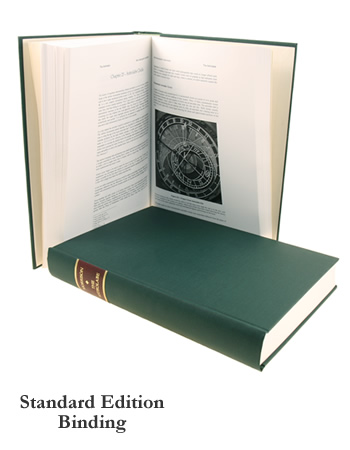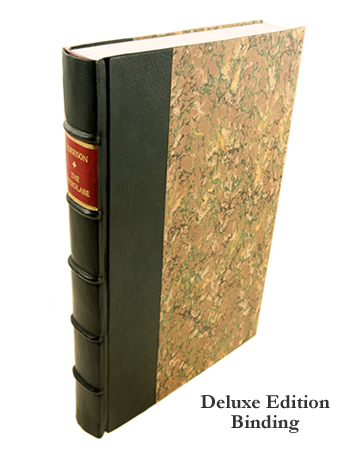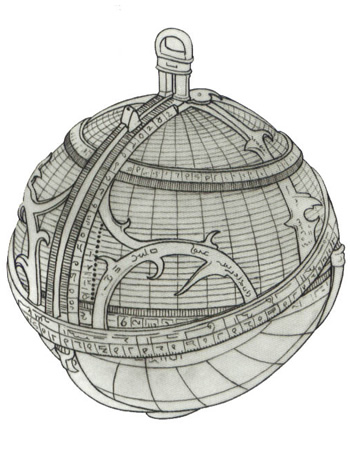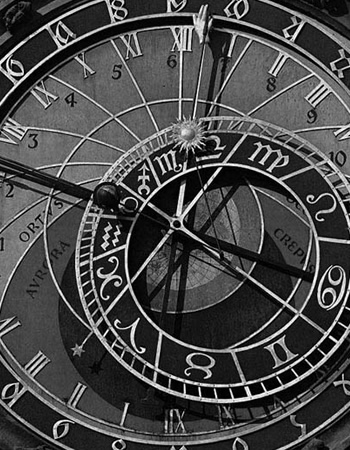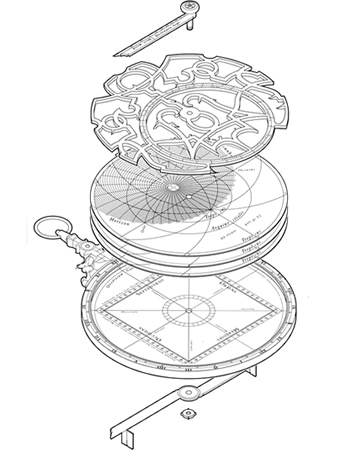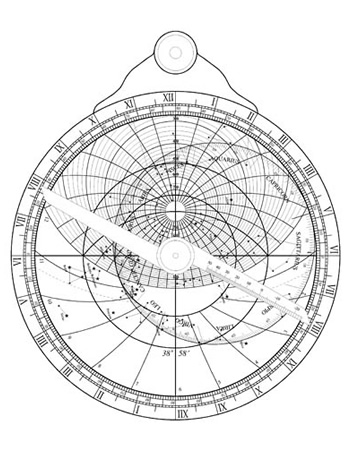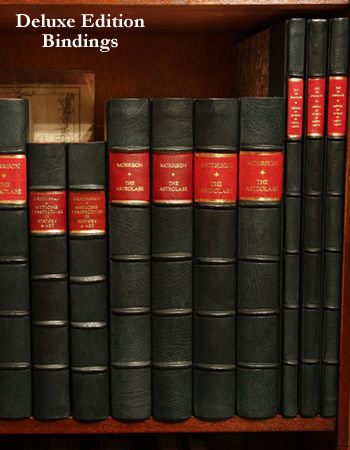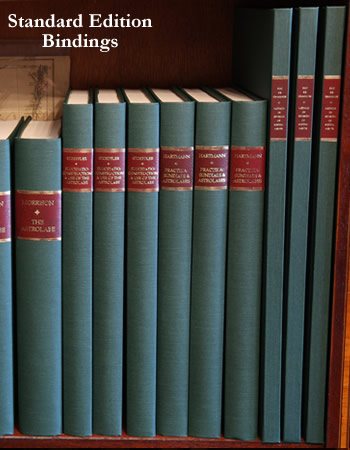BOOK CATALOG
The Astrolabe
by James E. Morrison
Hard cover, 438 pp.
Standard Edition Book Size - 8 3/4" x 12 1/2"
Deluxe Edition Book Size - 9 1/4" x 14"
Out of Print
The Astrolabe is the most complete astrolabe treatise available. It includes the
description, history, use, theory and design of all types of astrolabes and several related devices,
updated to modern methods and terminology. Application of computers to astrolabe design and practical
advice on making an inexpensive working astrolabe are included.
The Astrolabe is an invaluable reference for anyone with an interest in the history of science and
astronomy, the use and history of scientific instruments and, of course, astrolabes. It is an
introduction to pre-telescopic instruments for the novice, a reference for teachers and professionals,
a guide for designing reproductions and a source for researchers.
The Astrolabe is not a book about specific instruments. It covers the principles and design details
of each instrument type. A few pictures of old instruments are included, but only to show how the
principles are applied.
The intent of The Astrolabe is to be clear, accurate and complete. Each topic is introduced
in very basic terms and expanded with technical details as needed for more sophisticated subjects and applications.
A summary of the latest historical research for each instrument and type of instrument is included.
Astrolabes are visual instruments and are best learned with a visual reference. There are more than 250
figures showing the details of each instrument and scale discussed.
The material on applications of computers to astrolabe design is unique. Most of the figures are computer
produced and serve as examples of modern astrolabe design.
Also included are figures of the astrolabe components that can be copied and made into a working instrument.
Chapter 1 - The Astrolabe
Chapter 2 - A Concise History of the Astrolabe
Chapter 3 - The Stereographic Projection
Chapter 4 - The Planispheric Astrolabe Front
Chapter 5 - Drawing the Astrolabe Plate
Chapter 6 - The Rete
Chapter 7 - The Rule
Chapter 8 - The Astrolabe Back
Chapter 9 - Sample Problems
Chapter 10 - The Astrolabe for Southern Latitudes
Chapter 11 - Calculation Summary
Chapter 12 - Universal Astrolabes
Chapter 13 - The Saphea Arzachelis
Chapter 14 - Orthographic Astrolabes
Chapter 15 - De la Hire's Astrolabe
Chapter 16 – Quadrants
Chapter 17 - The Astrolabe Quadrant
Chapter 18 - The Prophatius Quadrant
Chapter 19 - Gunter’s Quadrant
Chapter 20 - Sutton's Quadrant
Chapter 21 - Horizontal Instruments
Chapter 22 - Astrolabe Variations
Chapter 23 - Astrolabe Clocks
Chapter 24 - Astronomical Background
Chapter 25 - Astronomical Calculations
Chapter 26 - Computers and Astrolabes
Chapter 27 - Design, Layout and Fabrication
The Astrolabe Book Review, courtesy of Bruce Stephenson, The Adler Planetarium:
“The astrolabe was the most advanced astronomical instrument of the pre-telescopic age. It combined in a handy, portable device a sight for measuring angles and a mechanical analog computer, to transform between terrestrial and celestial coordinate systems. For centuries the astrolabe was widely used by astronomers (and astrologers). Comprehensive treatises on its construction and use are not hard to find in the mathematical literature of the sixteenth and seventeenth centuries. Most of them were written in Latin, of course, and are long out of print.
Yet interest in astrolabes persists. James Morrison’s new book is written in clear, no-nonsense English. It emphasizes the function and use of the instrument, rather than dwelling on the beauty of astrolabes that survive in museum or private collections. This book will completely satisfy anyone who wants to understand the astrolabe as a scientific instrument. After introducing the mathematical projection that makes the whole thing work, Morrison offers detailed (and illustrated) discussions of all the many scales and diagrams found on European and Islamic astrolabes. He continues by describing and explaining several different “universal” astrolabes devised to work at any latitude, and then provides a detailed survey of half a dozen other instruments related to astrolabes.
Throughout the book the driving idea is that if you want to really understand the astrolabe, you need to make one, or at least be able to make one. And if you want to make an astrolabe today, you must have this book. It is informed throughout by years of experience making all kinds of astrolabes. Morrison has worried about every scale on an astrolabe. He has thought long and hard about every question that arises during the making of one. His advice is practical, and it is thorough. This is, in fact, the comprehensive treatise on the astrolabe for the twenty-first century."
Classical Science Press also offers a Deluxe Collector’s Edition of this volume.
The edition is quarter-bound in goatskin with
raised bands, leather-embossed spine label, and marbled boards.
|

